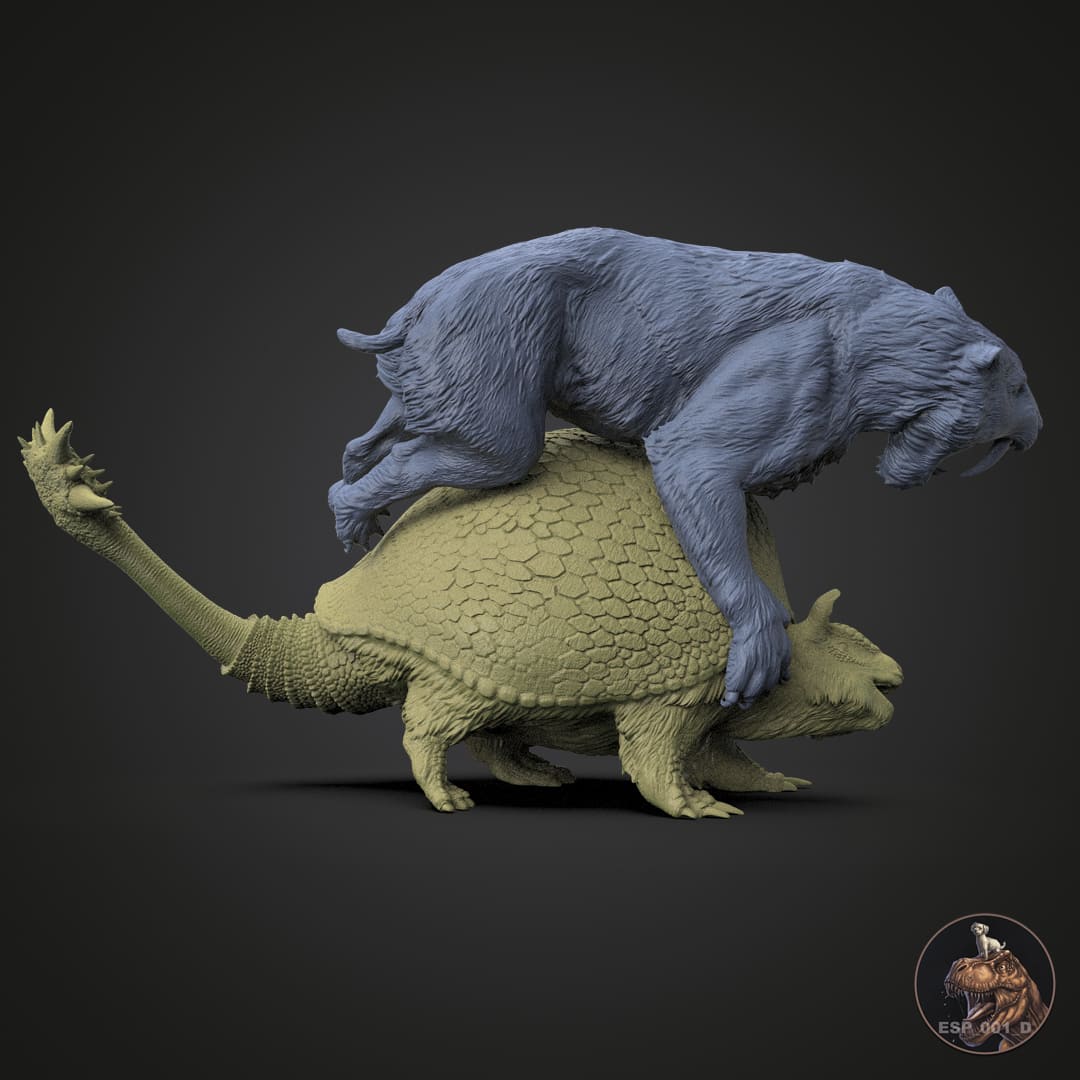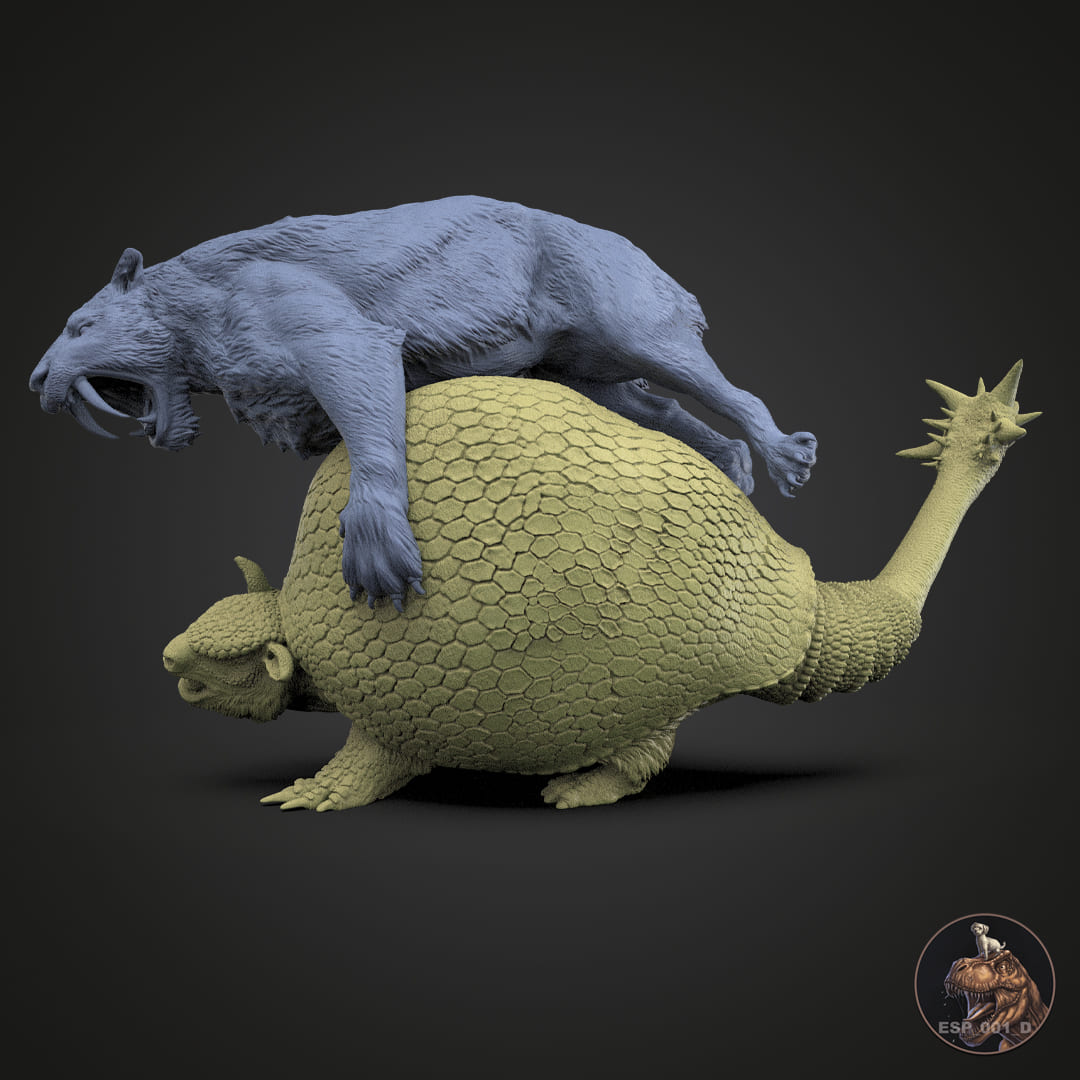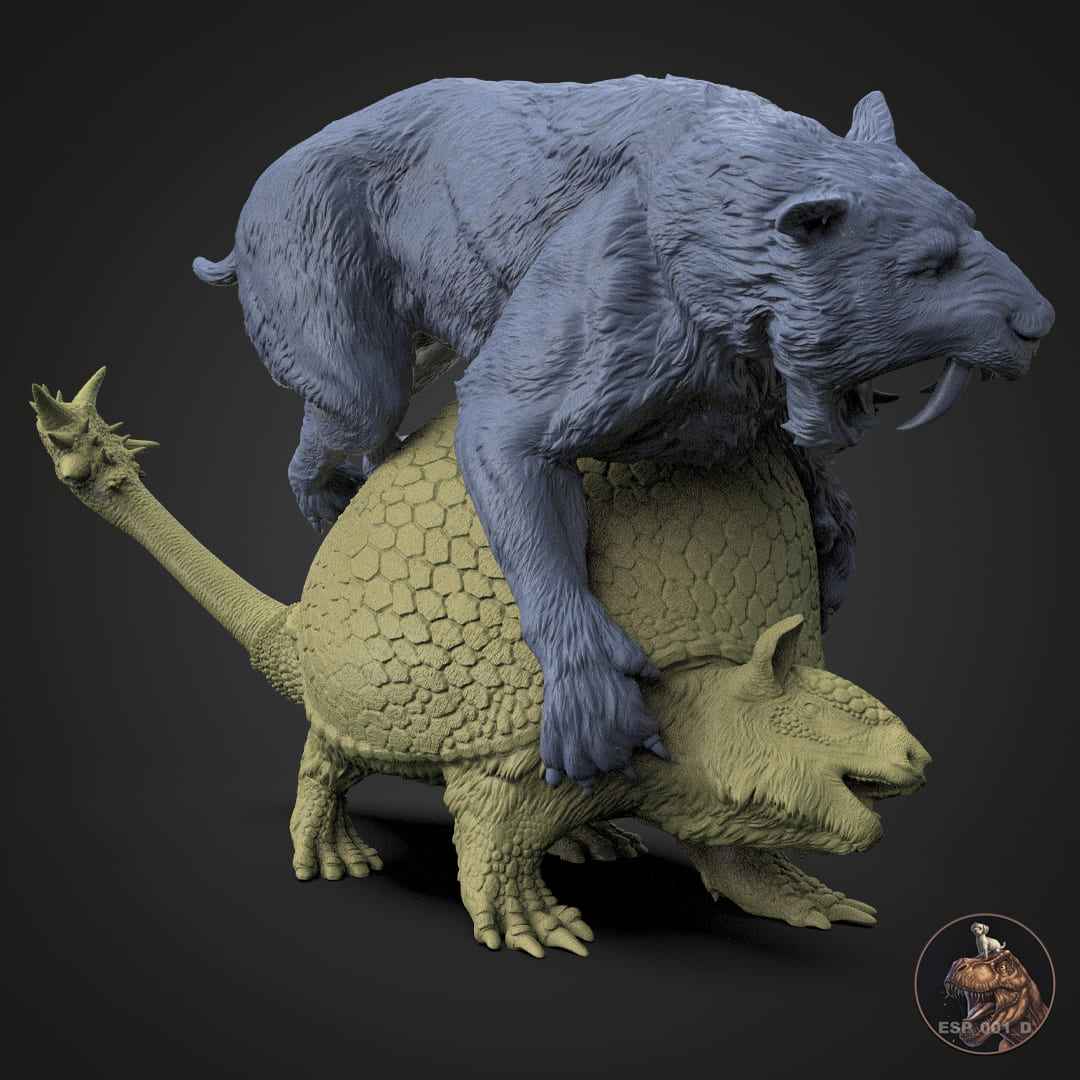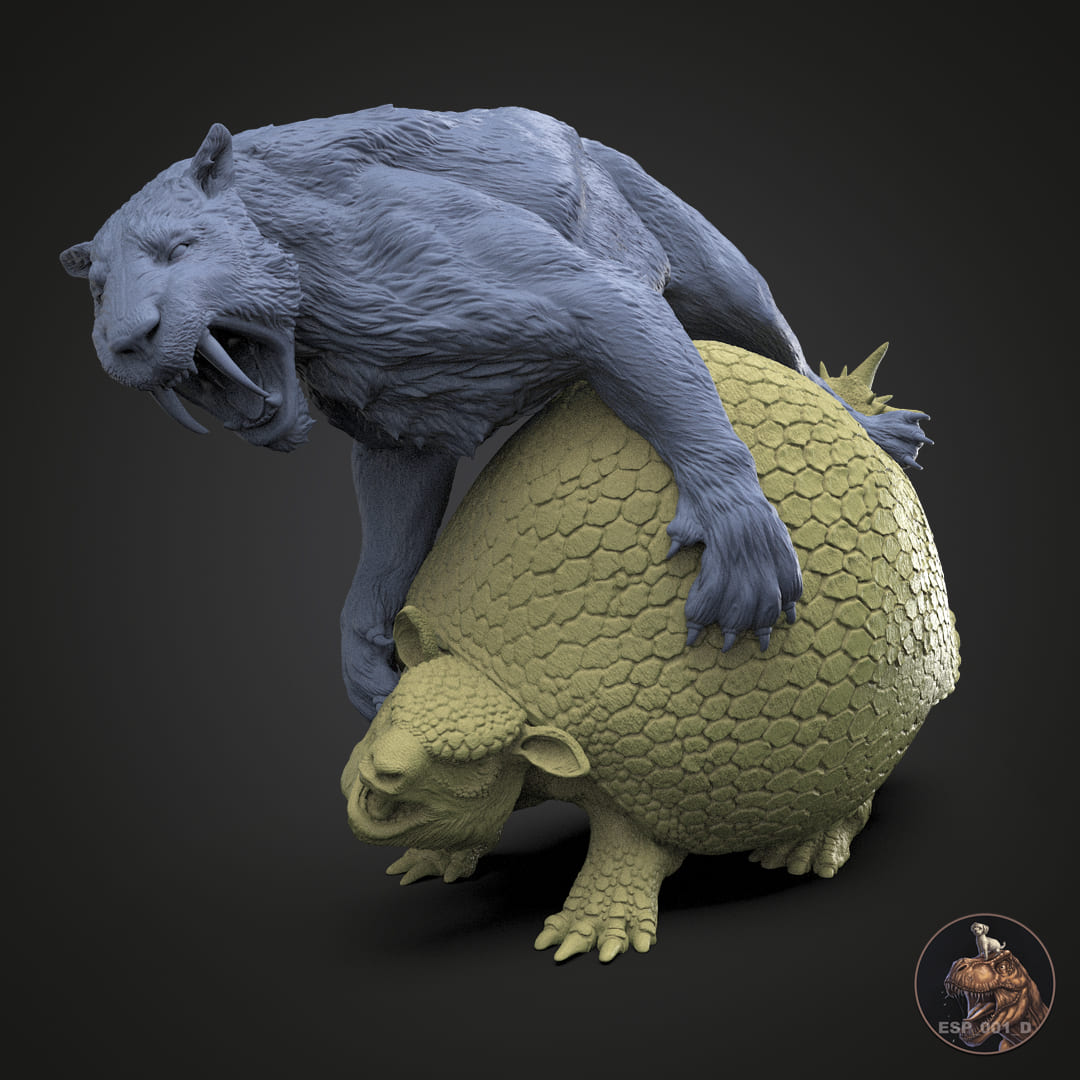



Smilodon populator / Doedoricus clavicaudatus
Do you want another scale?
Contact us and we will make it possible!
How will you receive your replica?
In the unprimed and primed variants, you will receive the complete replicas except for the large models, where you will receive an assembly kit.
In the hand-painted variant, the replicas will be delivered complete.
How does the painting service work?
We created a private chat for you where you will have direct communication with our painter , being able to choose your preferred color schemes and follow the hand painting process closely.
Pairs well with

Smilodon populator / Doedoricus clavicaudatus
If you have any questions, you are always welcome to contact us. We'll get back to you as soon as possible, within 24 hours on weekdays.
Shipping Information
Visit our shipping policy page to find all the information.
Customer Support
Give us a few details and we’ll offer the best solution. Connect by chat or email.
We are available 24/7.
FAQ’s
Visit our FAQ's page to find answers to common questions.
Contact Us
We'd love to hear from you. We are here to help. Visit our contact page to send us a message.
Product details
On the other hand, Doedicurus was a gigantic herbivorous mammal that lived during the same period in South America. This animal belonged to the family of glyptodonts, characterized by its body covered with a thick bony shell, similar to that of a modern armadillo, but much larger. The Doedicurus could reach more than three meters in length and weigh more than a ton. Its most distinctive feature was its tail, which ended in a huge bony club that it could use to defend itself from predators. Being a large herbivore, it grazed on the plains and savannahs, eating plants and low vegetation.
The interaction between a Smilodon and a Doedicurus would be a confrontation between predator and prey, although it would not be an easy fight for either of them. The Smilodon, although powerful and equipped with its sharp fangs, would have to be extremely careful when attacking a Doedicurus. The thick shell of the latter made it almost impenetrable, and any attempt to attack its flanks would be useless. In addition, the Doedicurus could use its powerful tail as a deadly weapon. If the Smilodon came too close from behind, the Doedicurus' bony club could strike with tremendous force, potentially breaking bones or killing the predator.
The Smilodon, aware of the danger, would likely try to find an angle of attack that would allow it to get close to the head or the Doedicurus' more vulnerable parts, such as the belly, although this would require patience and precise ambush. The cat could follow its prey, stalking it for a long time, waiting for the perfect moment to pounce. However, the Doedicurus, despite its size, would be alert, staying on the move to avoid giving the Smilodon an opportunity to attack. When it felt threatened, it would whip its tail in circles to deter the predator.
In this interaction, although the Smilodon was a formidable predator, the Doedicurus had a significant defensive advantage with its natural armor and lethal club, making the confrontation more balanced than it might seem at first glance. It is likely that on many occasions, Smilodon opted to seek out easier prey, leaving Doedicurus alone after a tense chase.
Approximate measurements of Smilodon:
- 1:35 scale Complete
- Length 69 mm
- Height 44 mm
- Width 38 mm
- Snout-tail base length 63 mm
- 1:20 scale Complete
- Length 110 mm
- Height 69 mm
- Width 60 mm
- Snout-tail base length 112 mm
Information about aftershocks
Collector's item ; Hyper-realistic replica, highly detailed and with a high degree of scientific precision.
Made to scale, prototyped in resin and with a scenic base in most of the models offered. If you like miniatures, both for collecting and for painting, we offer you a wide variety of scale replicas; All of them related to dinosaurs, extinct prehistoric fauna and current fauna.
So if you love dinosaurs and animals as much as we do, this is your favorite store to collect and paint them :)
We are authorized distributors of all the replicas and figures we offer. We use 3D printers with 8K - 14K resolution, and high-quality resins with additives to improve hardness and flexibility, thus offering replicas of impeccable quality.
Different scales will be used to make the replicas (depending on the size of the species), although we are open to making other suggested scales upon request as long as they fit in our printing trays, for which you will have to contact us via email and request the required size.
Replicas are supplied with the option of airbrush priming in dark grey. If you require another colour, please let us know which one you prefer in the box with special instructions for the seller. Without priming, we do not guarantee that the resin will accept paint.
We also offer the option of choosing a professionally painted replica, which is agreed upon throughout its development with the painter, through a private chat available.
Complete replica (one piece): We supply complete replicas in those models that are small, and models that are medium, large or not very bulky, will have the prerogative of being presented as a complete replica or assembly kit as the case may be.
Complete replicas will be supplied separately from their base.
Replica assembly kit: We supply replicas whose models are large, very large or bulky, only with this option.
The indicated replicas (generally composed of base, head, body and tail) will come prepared for the subsequent assembly that will be required by the client, by sanding, putty, adhesive or technique chosen by the client.
All replicas are thoroughly inspected before shipping and will be carefully packaged to prevent damage during transport.
Information about the models
The poses of the models aim to represent each character in the most scientifically viable way, thus revealing the life and customs of prehistoric and modern fauna.
Each character has its own personality and develops in different life scenarios; birth, adolescence and play, hunting, feeding, fighting, courtship, death and many other scenes from their daily life, always from the creative perspective of their designers.
Handmade
All orders are individually prepared on the cutter for subsequent prototyping, obtaining a resin part that will require post-processing by manual and ultrasonic cleaning, support removal, ultraviolet curing, labeling and packaging.

We are authorized distributors
We offer both our own physical replicas and those that have been modeled by many of the best 3D designers, in order to offer you the greatest possible variety.
Frequently Asked Questions
If you have any questions about products, orders or shipping, please read our FAQ page to learn more.
